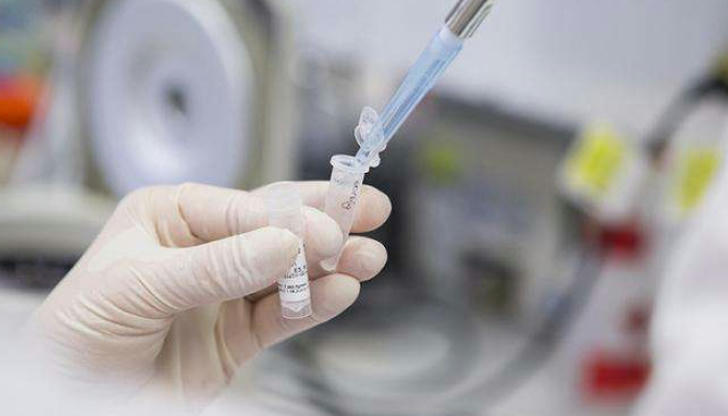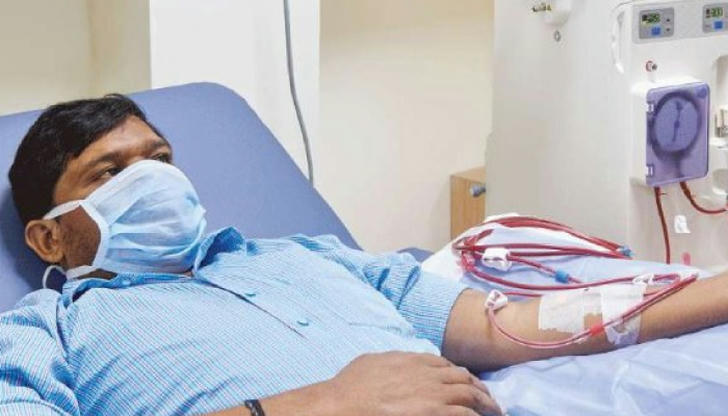Unveiling the Mysteries of Leukemia: A Comprehensive Guide
The Silent Invader: Understanding Leukemia
Leukemia is a formidable adversary that begins in the bone marrow, where blood cells are produced. This type of cancer results in the rapid production of abnormal white blood cells, which cannot function properly and can crowd out healthy blood cells. As leukemia progresses, it can affect various organs and systems throughout the body. While once considered a death sentence, advancements in medical science have significantly improved outcomes for patients. Let's delve deeper into this complex disease.

Types of Leukemia: Not All Are Created Equal
1. Acute Lymphocytic Leukemia (ALL)
Acute lymphocytic leukemia (ALL) primarily affects children but can occur at any age. It targets lymphocytes, a type of white blood cell crucial for fighting infections. ALL progresses rapidly, often requiring immediate treatment. Common symptoms include fatigue, frequent infections, easy bruising or bleeding, and bone pain. Early diagnosis and aggressive therapy are essential for effective management.
Case Study: In 2019, a five-year-old girl named Lily was diagnosed with ALL. Thanks to early detection and advanced treatments, she completed chemotherapy within two years and remains in remission today. Her story highlights the importance of prompt intervention and modern medical advancements.
2. Acute Myeloid Leukemia (AML)
Acute myeloid leukemia (AML) involves the rapid growth of abnormal myeloblasts, immature white blood cells. This type of leukemia can strike both adults and children. Symptoms may appear suddenly and can be similar to those of ALL, including fever, night sweats, and unexplained weight loss. AML requires swift and intensive treatment due to its aggressive nature.
Case Study: John, a 45-year-old father of two, was diagnosed with AML in 2020. After undergoing several rounds of chemotherapy and a stem cell transplant, he has been cancer-free for over a year. His experience underscores the effectiveness of current therapies when administered promptly.
3. Chronic Lymphocytic Leukemia (CLL)
Chronic lymphocytic leukemia (CLL) typically affects older adults and progresses slowly over months or years. Many people with CLL do not experience symptoms for years after diagnosis. When symptoms do appear, they may include swollen lymph nodes, weight loss, and frequent infections. Treatment for CLL is often delayed until symptoms become problematic.
Case Study: Mary, a retired teacher, was diagnosed with CLL at age 68. She lived symptom-free for five years before starting targeted therapy. Today, she continues to enjoy life with minimal disruption from her condition, highlighting the manageable nature of chronic leukemias.
4. Chronic Myeloid Leukemia (CML)
Chronic myeloid leukemia (CML) is characterized by an excess of mature or nearly mature granulocytes, a type of white blood cell. CML usually develops gradually over months or years. Early stages might show no symptoms, but later stages can lead to fatigue, night sweats, and an enlarged spleen. Targeted therapies like tyrosine kinase inhibitors (TKIs) have revolutionized the treatment of CML.
Case Study: David, a software engineer, was diagnosed with CML in his mid-30s. With the help of TKIs, he maintains a normal lifestyle and has not experienced significant side effects. His case exemplifies how targeted therapies can provide long-term control of the disease.

Recognizing the Red Flags: Symptoms of Leukemia
Identifying the symptoms of leukemia early can significantly improve outcomes. Common signs to watch for include:
Fatigue and Weakness: Feeling unusually tired despite adequate rest.
Frequent Infections: Recurring illnesses that do not respond well to treatment.
Unexplained Bruises or Bleeding: Spontaneous bruising or bleeding from gums or nose.
Bone Pain or Tenderness: Persistent discomfort in bones or joints.
Swollen Lymph Nodes: Painless lumps in the neck, underarms, or groin.
Weight Loss and Night Sweats: Unintentional weight loss and excessive sweating during sleep.
If you or a loved one experiences these symptoms, it is crucial to consult a healthcare provider for evaluation.

Fighting Back: Treatment Options for Leukemia
1. Chemotherapy
Chemotherapy remains a cornerstone of leukemia treatment. It uses powerful drugs to kill cancer cells. Administration methods include oral pills, intravenous infusions, or injections directly into the cerebrospinal fluid. The intensity and duration of chemotherapy depend on the type and stage of leukemia. For instance, patients with ALL may undergo intensive chemotherapy for several months.
2. Radiation Therapy
Radiation therapy employs high-energy rays to destroy cancer cells. It is sometimes used to treat leukemia that has spread to the brain or spinal cord. Radiation can also prepare patients for stem cell transplants by eliminating diseased bone marrow.
3. Stem Cell Transplant
Stem cell transplants replace damaged bone marrow with healthy stem cells from a donor or the patient's own body. This procedure is often reserved for patients who have relapsed or have high-risk leukemia. Preparatory treatments like chemotherapy or radiation are required to prepare the body for the transplant.
4. Targeted Therapy
Targeted therapies focus on specific abnormalities within cancer cells that allow them to survive and grow. Drugs such as tyrosine kinase inhibitors (TKIs) are commonly used in treating CML by blocking the signals that tell cancer cells to grow. These therapies offer more precise targeting with fewer side effects compared to traditional chemotherapy.
5. Immunotherapy
Immunotherapy boosts the body’s immune system to better recognize and attack cancer cells. CAR T-cell therapy, for example, modifies a patient’s own T-cells to target leukemia cells specifically. This innovative approach has shown promising results in clinical trials.
The Financial Burden: Costs Associated with Leukemia Treatment
The cost of leukemia treatment can vary widely depending on factors such as the type of leukemia, the chosen treatment plan, the length of treatment, and the healthcare provider. In the United States, the average cost of leukemia treatment can range from 150,000to150,000to800,000 or more, especially when advanced treatments like stem cell transplants are involved. Insurance coverage plays a crucial role in managing these costs. Patients should work closely with their healthcare providers and insurance companies to understand potential expenses and explore financial assistance options.
Case Study: Sarah, a single mother, faced significant financial challenges when her son was diagnosed with ALL. Through a combination of health insurance, charitable organizations, and community support, she managed to cover the costs of his treatment. Her story emphasizes the importance of seeking multiple avenues of financial support.

Prognosis and Survival Rates: Hope on the Horizon
Survival rates for leukemia have improved dramatically over the past few decades due to advances in medical research and treatment methods. The 5-year survival rate for all types of leukemia combined is around 64%. However, this varies widely depending on the specific type of leukemia:
ALL: The 5-year survival rate for children with ALL is about 90%, while for adults it is approximately 70%.
AML: The 5-year survival rate for AML is about 27% overall, though it can be higher for younger patients.
CLL: With its slow progression, many people live for years with CLL, and the 5-year survival rate is around 87%.
CML: Thanks to targeted therapies like TKIs, the 5-year survival rate for CML is now over 90%.
These statistics highlight the progress made in leukemia treatment and offer hope to patients and families.

Prevention and Risk Reduction: Taking Control
While there is no surefire way to prevent leukemia, certain lifestyle choices and precautions can help reduce risk:
Avoid Exposure to Harmful Chemicals: Limit exposure to benzene and formaldehyde, known carcinogens found in some industrial settings.
Quit Smoking: Smoking increases the risk of AML and possibly other forms of leukemia. Quitting can lower this risk.
Maintain a Healthy Lifestyle: Eating a balanced diet, exercising regularly, and maintaining a healthy weight can support overall health.
Limit Radiation Exposure: Avoid unnecessary medical imaging tests that involve radiation unless recommended by a doctor.
Stay Informed About Family History: Knowing your family’s medical history can alert you to potential genetic predispositions.
Case Study: The Smith family, with a history of blood cancers, took proactive steps to reduce their risk. They adopted healthier lifestyles, limited exposure to harmful chemicals, and stayed vigilant about regular check-ups. Their actions underscore the importance of preventive measures in managing health risks.
Support and Resources: You Are Not Alone
Living with leukemia can be challenging both physically and emotionally. Support groups, counseling services, and educational resources can provide valuable assistance:
Support Groups: Joining a support group allows individuals to share experiences and coping strategies with others facing similar challenges.
Counseling Services: Professional counselors can offer emotional support and guidance for dealing with the psychological impact of leukemia.
Educational Resources: Organizations like the Leukemia & Lymphoma Society offer extensive information on treatment options, clinical trials, and patient advocacy.
Case Study: The Johnson family found solace in joining a leukemia support group. Connecting with others who understood their struggles provided emotional support and practical advice, making their journey less isolating.

Conclusion: Embracing Hope and Empowerment
Leukemia remains a formidable challenge, but ongoing advancements in medical science continue to improve outcomes and quality of life for patients. By understanding the different types of leukemia, recognizing symptoms early, exploring available treatments, managing associated costs, appreciating survival rates, and adopting preventive measures, individuals and families can make informed decisions and seek appropriate support. Education and awareness are key components in navigating the journey through leukemia, providing hope and empowerment in the face of adversity. Together, we can fight this silent invader and pave the way for a brighter future.
